Locational Networks
from
19c Epic Poems
Elisa Beshero-Bondar (@epyllia)
Professor of Digital Humanities
Presentation for the HSS Colloquium Series
at Penn State Erie, The Behrend College via Zoom (17 February 2022)
Link to these slides: https://slides.com/elisabeshero-bondar/thalabana
Locational Networks
from
19c Epic Poems
Elisa Beshero-Bondar (@epyllia)
Professor of Digital Humanities
Presentation for the HSS Colloquium Series
at Penn State Erie, The Behrend College via Zoom (17 February 2022)
Link to these slides: https://slides.com/elisabeshero-bondar/thalabana
Epic poems at the turn of the 19th century
- planetary scale
- encyclopedic scope
-
formal experimentation
- hybrid of poetry and prose notes
- research poem
- narrativize big ideas
- epic similes, analogies
- organizing citation networks
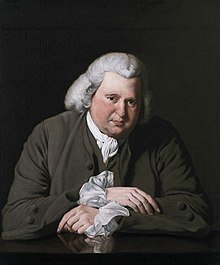
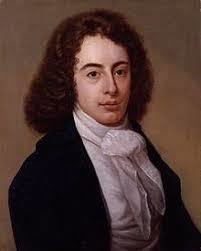
The Loves of Plants:
botanical epic
ambition:
an epic poem for each of the world’s cultures
Background: 1801 Mercator projection world map by John Cary
Source: Javed Majeed, Ungoverned Imaginings: James Mill’s The History of British India and Orientalism (Oxford: Clarendon Press, 1992) 53.
“. . .as though he were in a laboratory of cultures, experimenting with and constructing different cultural identities.”

Robert Southey‘s cultural appropriations lab?
epic labor: writing . . .
speculative historiography?
Epic after Volney’s Les Ruines
(Ruins of Empires) (1791)
historical fiction?
- “neo“ epic to outdo classical epic
- imagine the world according to nonWestern frameworks
- Orientalist appropriation
- Experimental thinking space outside of home culture
- Theoretical work about culture
- Structured thought: verse forms with prose appendages
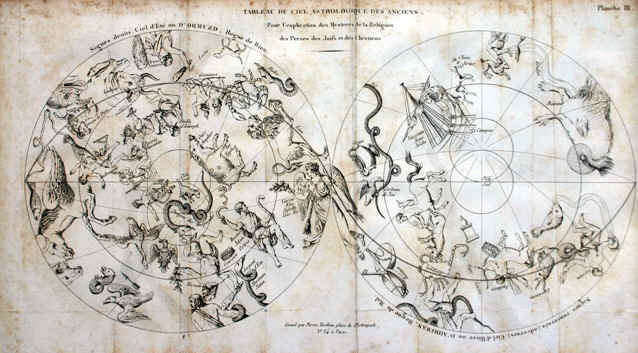
anti-classical epic?
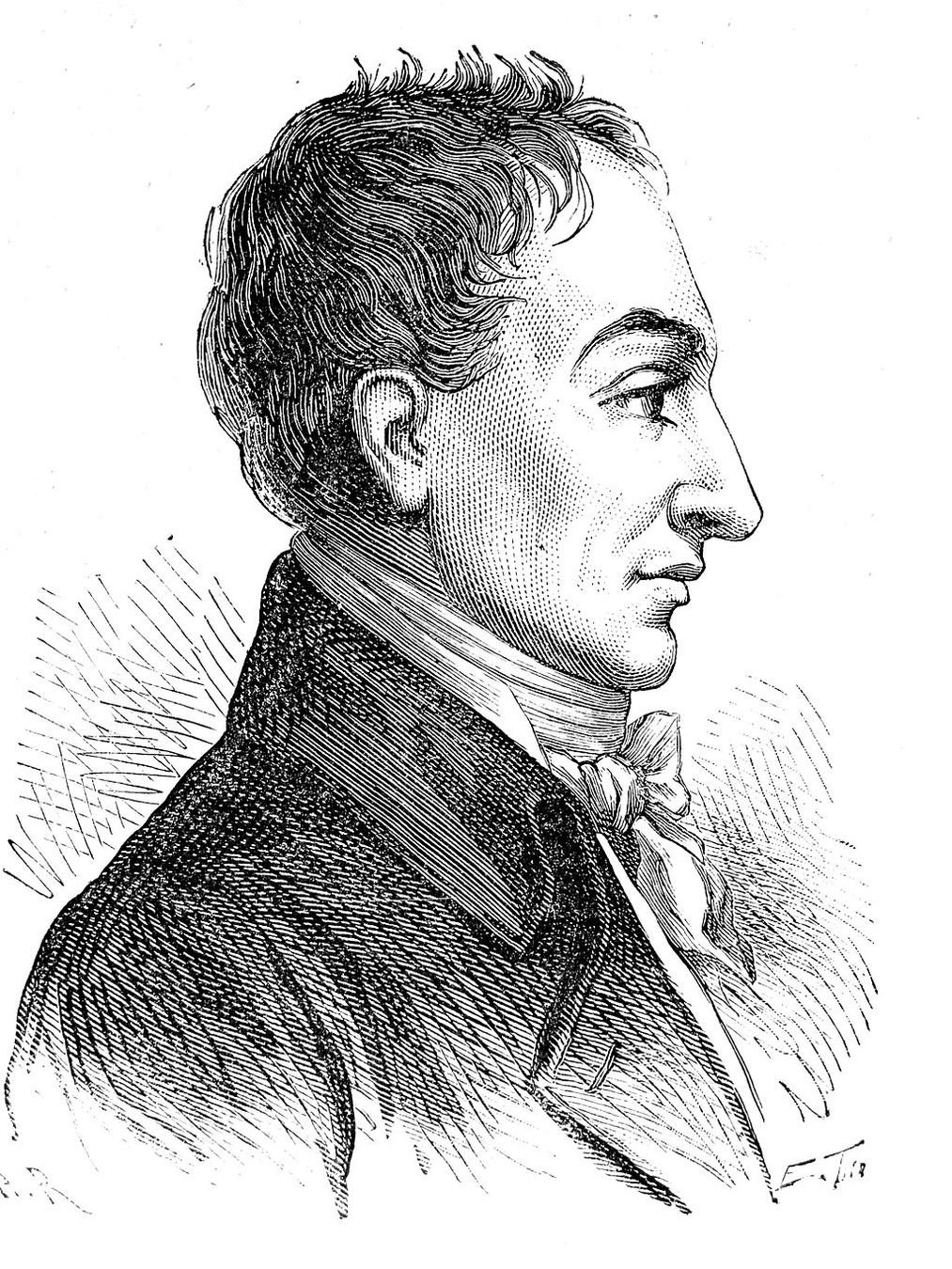
Thalaba the Destroyer (1801)
- Bullet One
- Bullet Two
- Bullet Three
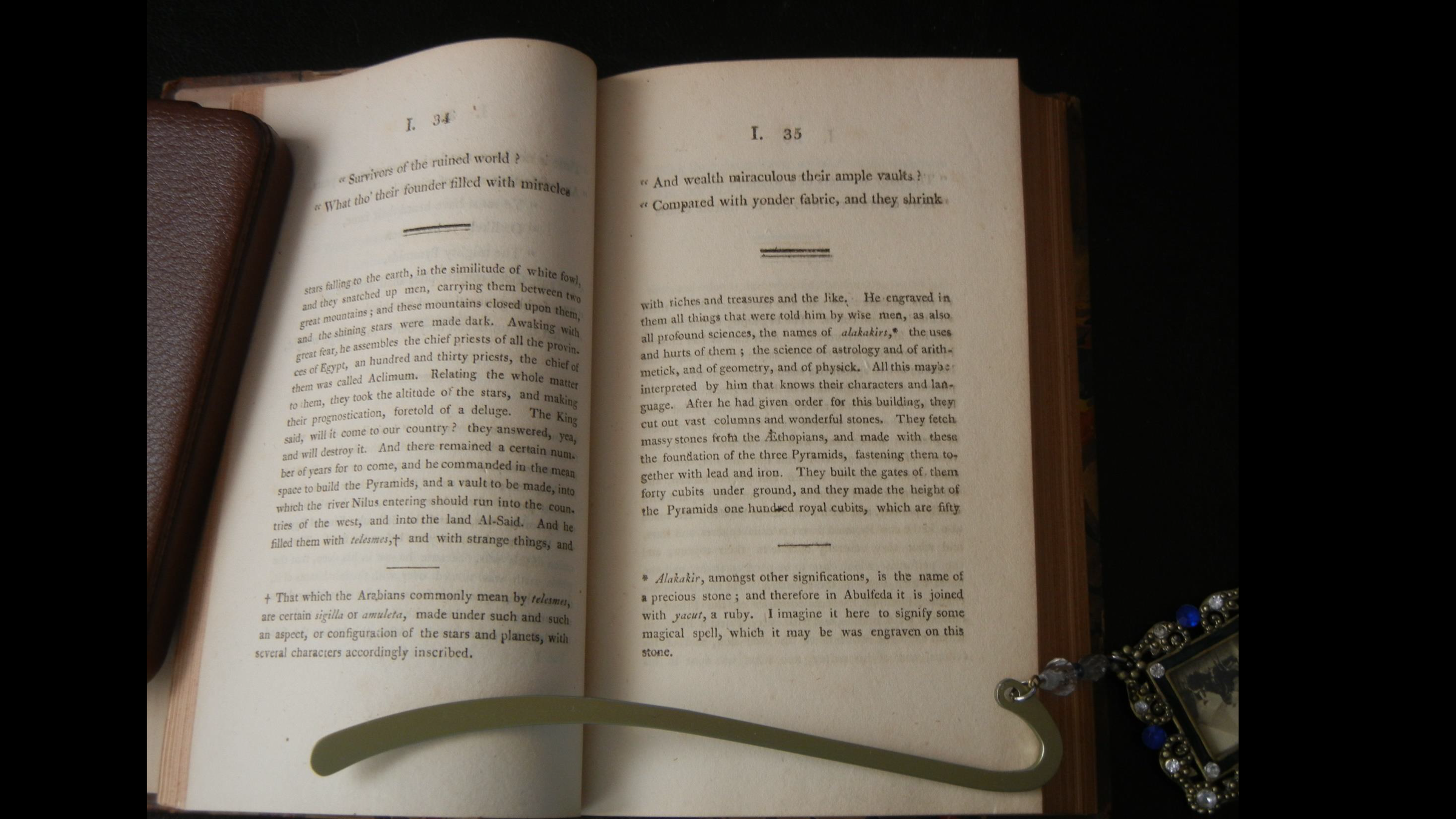
<sourceDesc>
<p>This text is based on the Project Gutenberg eBook of <bibl>
<title>Thalaba the Destroyer</title> by <author>Robert Southey</author>
<pubPlace>London</pubPlace>
<publisher>PRINTED FOR T. N. LONGMAN AND O. REES</publisher>
<pubPlace>PATERNOSTER-ROW, London</pubPlace>
<publisher>BY BIGGS AND COTTLE</publisher>
<pubPlace>Bristol</pubPlace>,<date>1801</date>. </bibl> Release
date: <date/> [Ebook #39804] Public domain in the USA.
<ref target="http://www.gutenberg.org/files/39804/39804-h/39804-h.htm"/></p>
<p>This eBook is for the use of anyone anywhere
at no cost and with almost no
restrictions whatsoever. You may copy it, give it away
or re-use it under the terms
of the Project Gutenberg License included with this eBook
or online at www.gutenberg.org/license</p>
</sourceDesc><lg xml:id="B5_lg317">
<l rend="i0" n="2460">
<rs type="place" ref="Bagdad" ana="hereNow">Then Pomp and Pleasure
dwelt within her walls</rs>
</l>
<l rend="i0" n="2461">The Merchants of <placeName ref="the_East" ana="rel">the
East</placeName> and of <placeName ref="the_West" ana="rel">the
West</placeName></l>
<l rend="i4" n="2462">Met <rs type="building" subtype="commerce">in her arched
<note type="author" anchored="true" xml:id="N_90">
<p><rs type="building" subtype="house">The houses</rs> in
<placeName>Persia</placeName> are not in the same place with
<rs type="building" subtype="commerce">their shops, which stand for
the most part in long and large arched streets 40 or 50 foot high,
which streets are called Basar or the market</rs>, and
make the heart of the city, the houses being in the out parts, and having
almost all <rs type="earthworks" subtype="garden">gardens</rs> belonging to 'em.
<bibl>Chardin.</bibl></p>
<p> At <placeName>Tauris</placeName> he says, "there are the fairest
Basars that are in any place of <placeName>Asia</placeName>, and it
is a lovely sight to see their vast extent, their largeness, their
beautiful Duomos and the arches over 'em." </p>
<p> At <placeName>Bagdad</placeName> the Bazars are all vaulted,
otherwise the merchants could not remain in them on account of the
heat. They are also watered two or three times a day, and a number
of <orgName>the poor</orgName> are paid for rendering this service
to <orgName>the public</orgName>. <bibl>Tavernier.</bibl></p>
</note>
Bazars;</rs></l>
<l rend="i4" n="2463">All day the active poor</l>
<l rend="i0" n="2464">Showered a cool comfort o'er her thronging streets;</l>
. . .
</lg>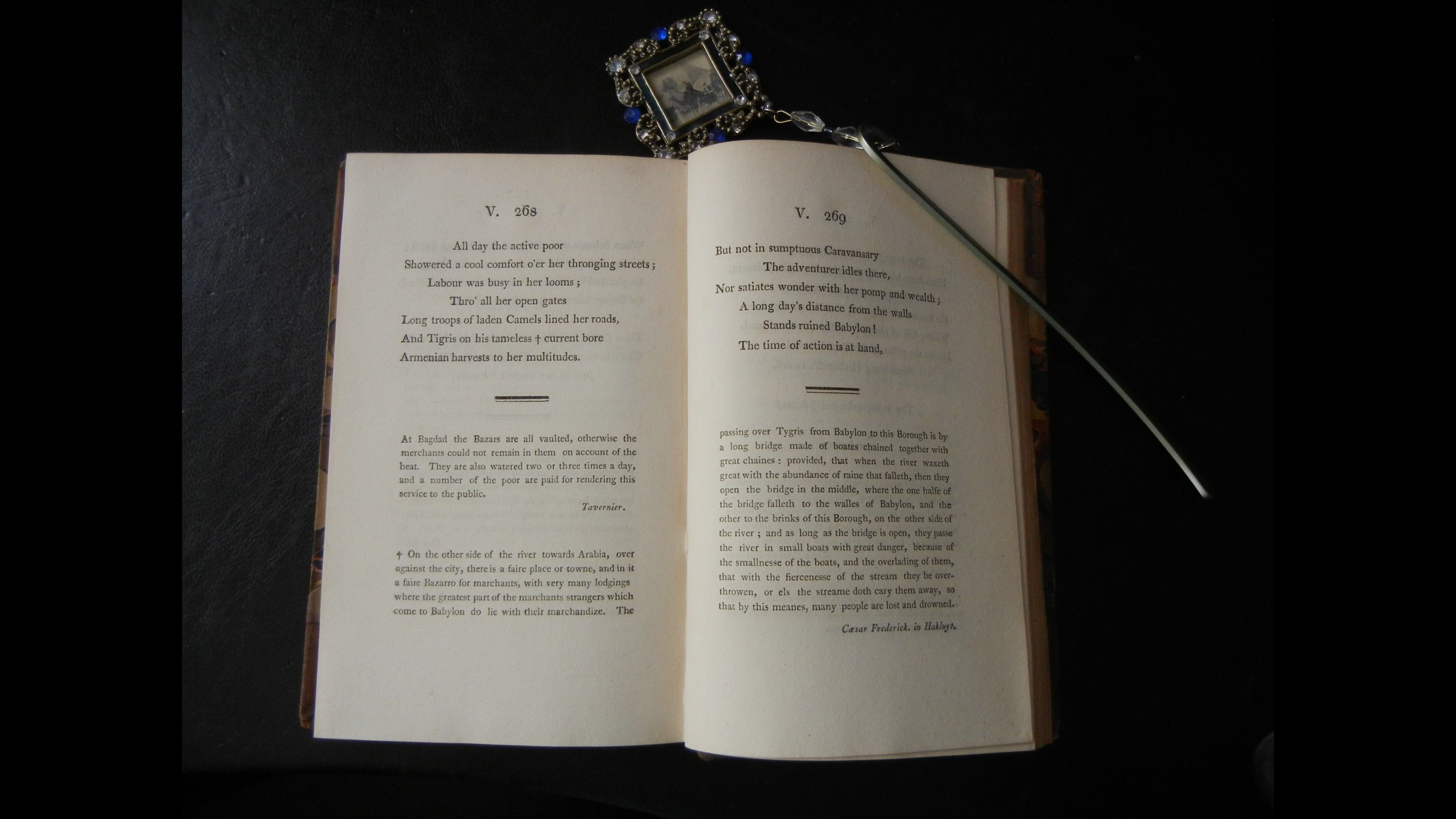
- Text || Paratext
- West || East
- Futurity || Antiquity
- Heresy || Devotion
Structured antitheses
while we're at it. . .
- Prose || Poetry
- Science || Fiction
- “Demon Art” || Natural Life
Thalaba, the fatalistic Islamic hero vs.
the Domdaniel Sorcerers‘ electric-powered Automaton
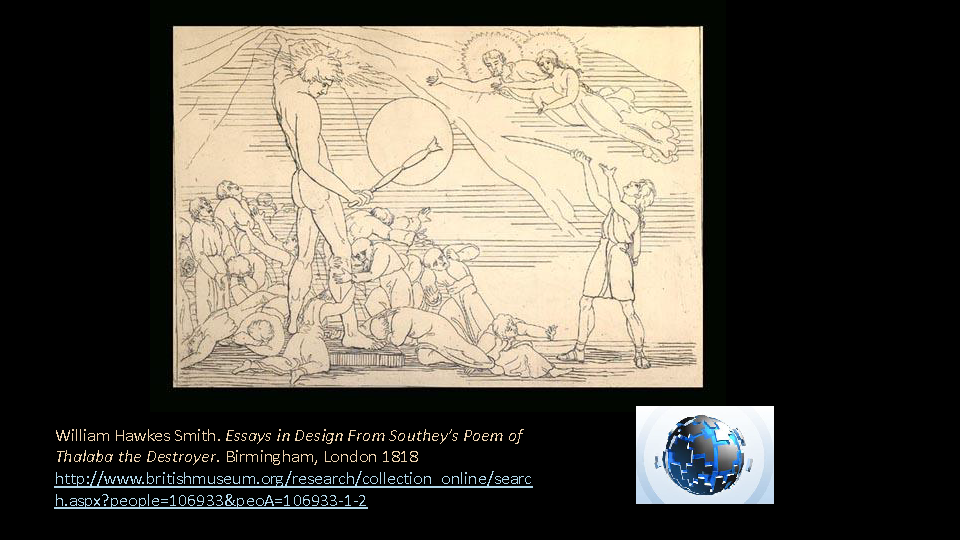
It was a Living Image, by the art
Of magic hands of flesh and bones composed,
And human blood thro’ veins and arteries
That flowed with vital action.
In the shape Of Eblis it was made,
Its stature such and such its strength
As when among the Sons of God
Pre-eminent, he raised his radiant head,
Prince of the Morning.
On his brow
A coronet of meteor flames,
Flowing in points of light.
Self-poised in air before him,
Hung the Round Altar, rolling like the World
On its diurnal axis, like the World
Checquered with sea and shore,
The work of Demon art.
For where the sceptre in the Idol’s hand
Touched the Round Altar, in its answering realm
Earth felt the stroke, and Ocean rose in storms,
And ruining Cities shaken from their seat
Crushed all their habitants.
His other arm was raised, and its spread palm
Up-bore the ocean-weight
Whose naked waters arched the sanctuary,
Sole prop and pillar he.
—Thalaba the Destroyer, Book XII
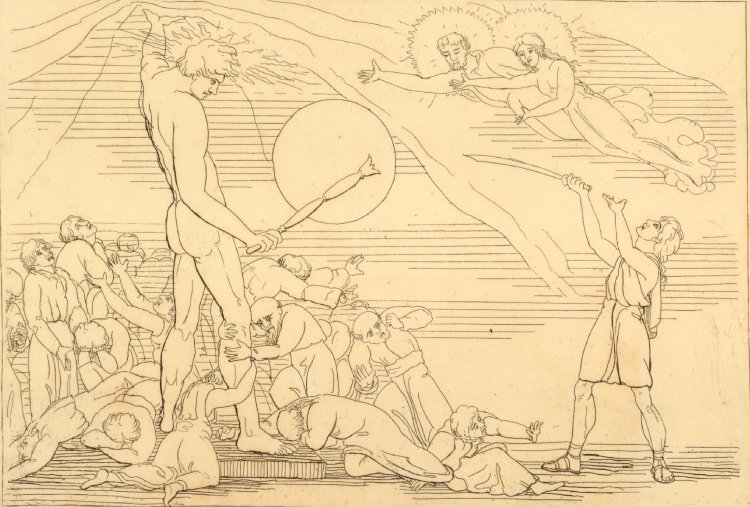


Do 18th-century androids dream of electric lives. . .?
Jaquet Droz the Clockmaker meets Thalaba the Destroyer
Modeling Southey’s location networks
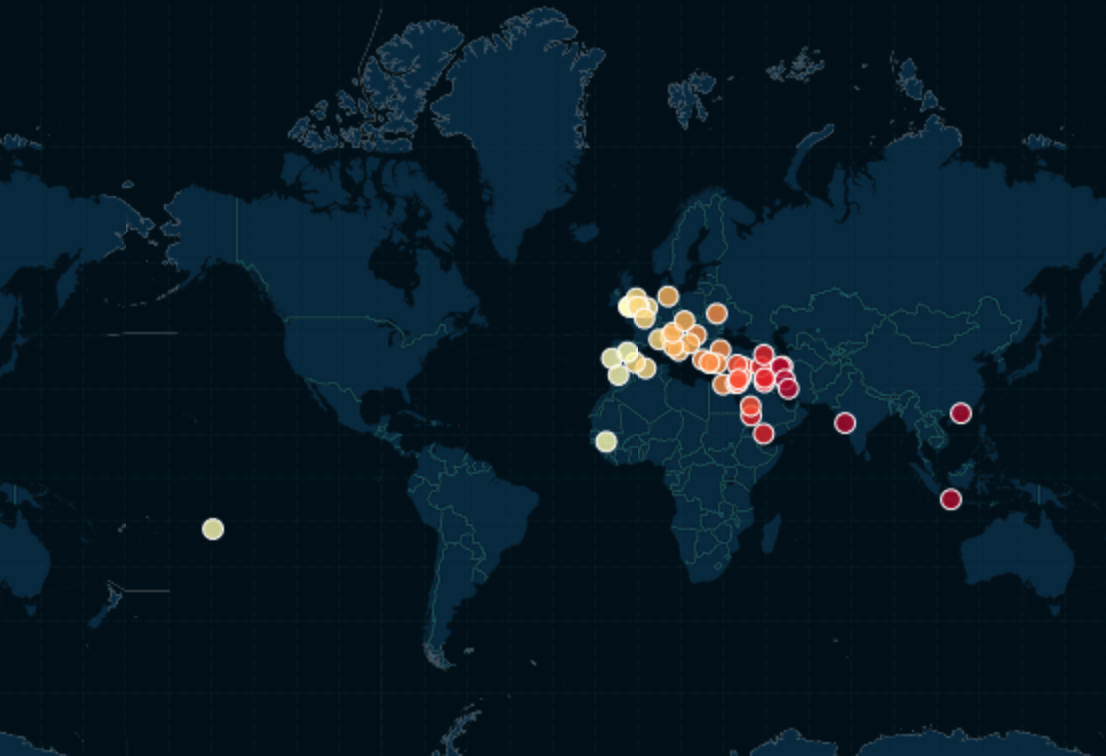
“Anti-social” network:
- by analogy
- by juxtaposition of the mythical and mappable
- cultural dislocations, meta experiences of “place-ness“
- reading as traveling: what hubs of transit for the flying imagination?
a conceptual modeling of places
- response to overemphasis on main plot and characters
- underemphasis on locational referencing

Epic transportation between “places” and “metaplaces”
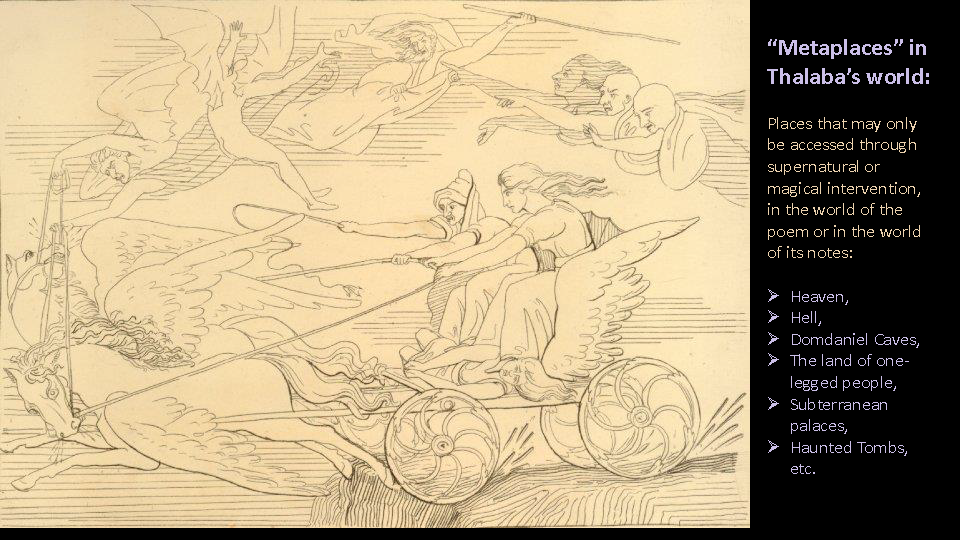
Network data format
Ethiopia place no-ana note B1_lg23 Eden metaplace anaExample:
SourceNode [tab] SourceAtt1 [tab] SourceAtt2 [tab] Edge [tab] TargetNode [tab] TargetAtt1 [tab] TargetAtt2
Ethiopia
Eden
connection formed in a footnote on Book 1 line-group 23

Crash Course in Network Centrality Measures
- Highest Degree Centrality?
- Diane
- Highest Edge-Betweenness?
- Heather
- Highest Closeness Centrality?
- Fernando or Garth
XQuery to Network Data: XML to TSV
- Note: I made my first networks from XSLT. You can use either. For more, see my tutorial and XQuery-to-NA exercise 1 and 2.
- You‘re outputting a "plain text" format (TSV) from XML
- TSV = tab-separated values (like CSV, comma-separated values)
- Thanks to Wendell Piez for simplifying my XSLT “if-then-else” statements into this quotable XQuery after the TEI conference in Chicago, 2014. (Yes, you can output text from XSLT.)
declare default element namespace "http://www.tei-c.org/ns/1.0";
declare namespace elisa='http://elisa.org';
declare function elisa:place-string($place as element()) as xs:string {
$place/(@ref/normalize-space(.),normalize-space(.))[1]
};
let $places := //(placeName|rs[@type=('place','metaplace') and not(@subtype='language')])
return string-join(
for $place in $places
let $kin := ($place/ancestor::lg//(placeName|rs[@type=('place','metaplace')] except $place))
return
$kin/
string-join(
(elisa:place-string($place),
($place[@type='metaplace']/'metaplace','place')[1], ($place[@ana]/@ana, 'no-ana')[1],
($place/ancestor::div[@type='footnotes']/'note','main')[1],
ancestor::lg/@xml:id,
elisa:place-string(.),
(.[@type='metaplace']/'metaplace','place')[1], (.[@ana]/@ana, 'no-ana')[1]
),
'	')
,'
')Samples of output data in TSV
bitumen_pit metaplace hereNow main B5_lg344 Ispahan place no-ana
bitumen_pit metaplace hereNow main B5_lg344 France place no-ana
bitumen_pit metaplace hereNow main B5_lg344 Germany place no-ana
bitumen_pit metaplace hereNow main B5_lg344 Spain place no-anaIrem place hereNow main B1_lg20 Arabia place no-ana
Irem place hereNow main B1_lg20 Hejaz place no-ana
Irem place hereNow main B1_lg20 Mecca place no-ana
Irem place hereNow main B1_lg20 Hejaz place no-ana
Irem place hereNow main B1_lg20 Red_Hillock place no-ana
Irem place hereNow main B1_lg20 Red_Hillock place no-ana
Irem place hereNow main B1_lg20 Magaith place no-ana
Irem place hereNow main B1_lg20 the_world place no-ana
Irem place hereNow main B1_lg20 Al_Ahkaf place no-ana
Irem place hereNow main B1_lg20 Al_Ahkaf place no-ana
Al_Ahkaf place no-ana note B1_lg20 Irem place hereNow
Al_Ahkaf place no-ana note B1_lg20 Al_Ahkaf place no-ana
Al_Ahkaf place no-ana note B1_lg20 Hadramaut place no-ana
Al_Ahkaf place no-ana note B1_lg20 Irem place no-ana
Al_Ahkaf place no-ana note B1_lg20 the desarts of Aden place no-ana
Al_Ahkaf place no-ana note B1_lg20 sky metaplace no-ana
Al_Ahkaf place no-ana note B1_lg20 Arabia place no-ana
Al_Ahkaf place no-ana note B1_lg20 Hejaz place no-ana
Al_Ahkaf place no-ana note B1_lg20 Mecca place no-ana
Al_Ahkaf place no-ana note B1_lg20 Hejaz place no-ana
Al_Ahkaf place no-ana note B1_lg20 Red_Hillock place no-ana
Al_Ahkaf place no-ana note B1_lg20 Red_Hillock place no-ana
Al_Ahkaf place no-ana note B1_lg20 Magaith place no-ana
Al_Ahkaf place no-ana note B1_lg20 the_world place no-ana
Al_Ahkaf place no-ana note B1_lg20 Al_Ahkaf place no-ana
Al_Ahkaf place no-ana note B1_lg20 Al_Ahkaf place no-ana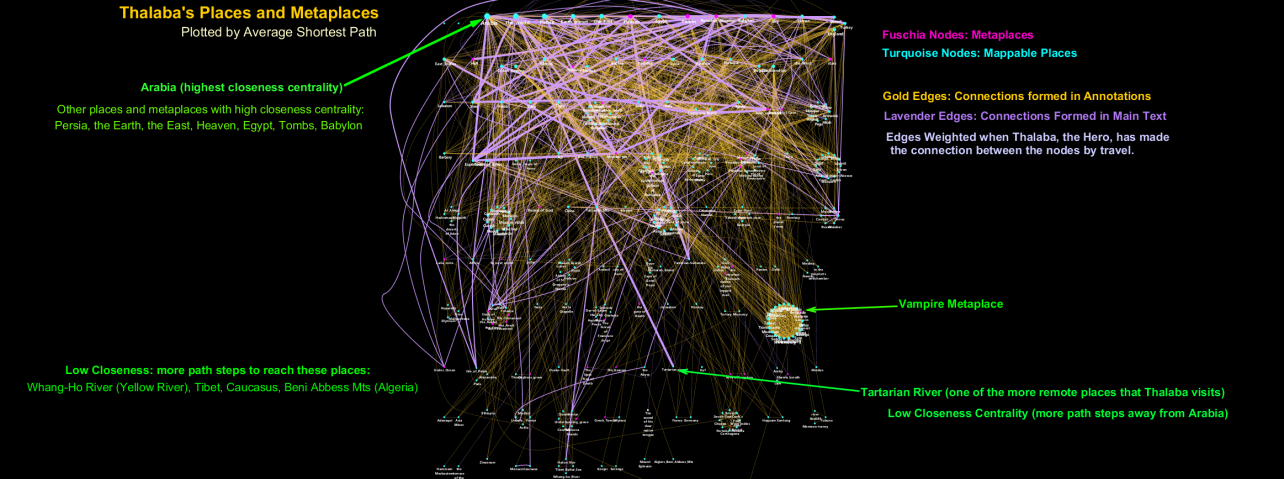
network visualizations vis Cytoscape
(Website) network visualizations vis Cytoscape
By comparison with Erasmus Darwin‘s The Botanic Garden (1791)

The Vampire Metaplace Cluster:
Thalaba network‘s most densely connected clicque


Two path steps from the Vampire Metaplace cluster
replotted to distinguish ”place” from ”metaplace“
Thalaba‘s second most densely clustered clique
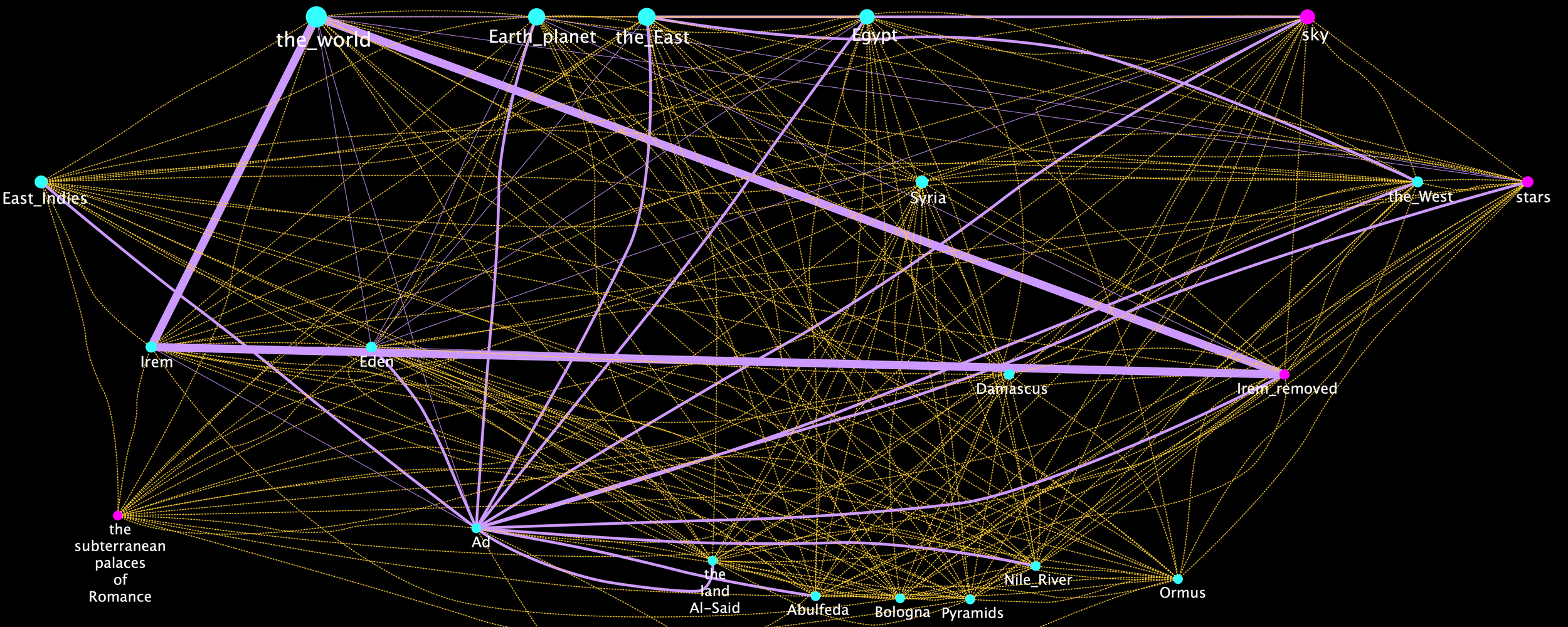
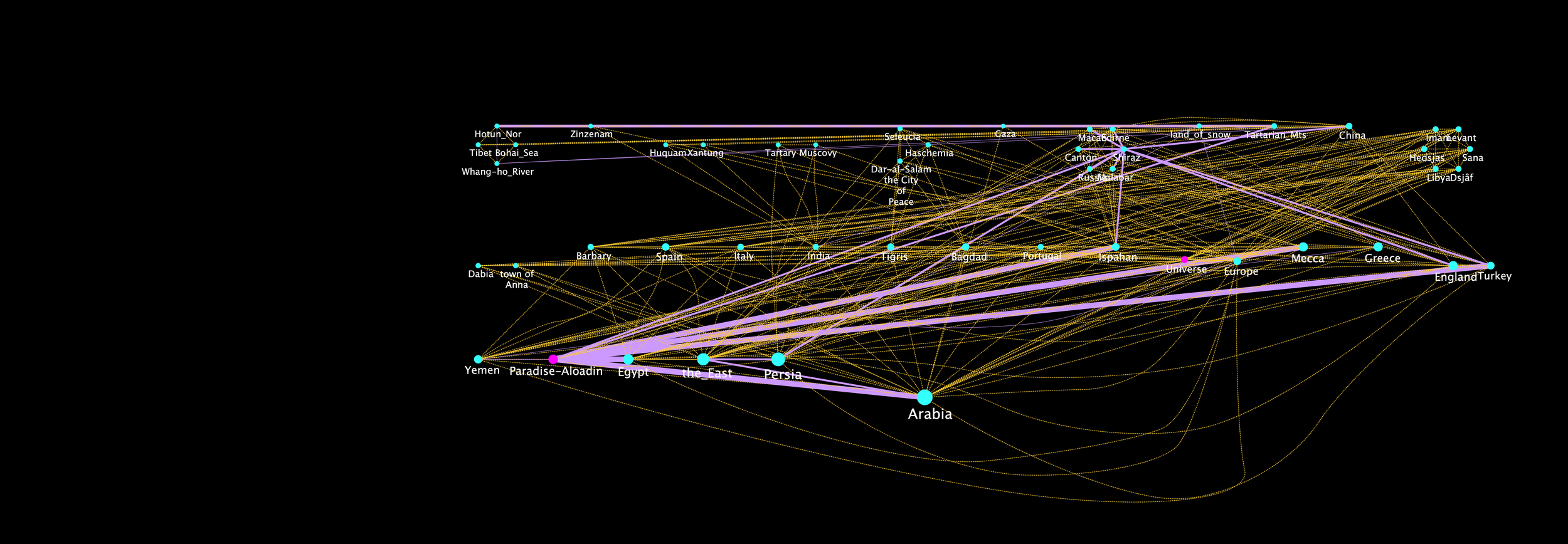
the most remote locations on Southey‘s network
(closeness centrality / average shortest path length)
Reflection / Discussion
- How do networks help us with epic poems?
- Understanding imperial “armchair travel“ of the 19c?

Further reading (clickable)
